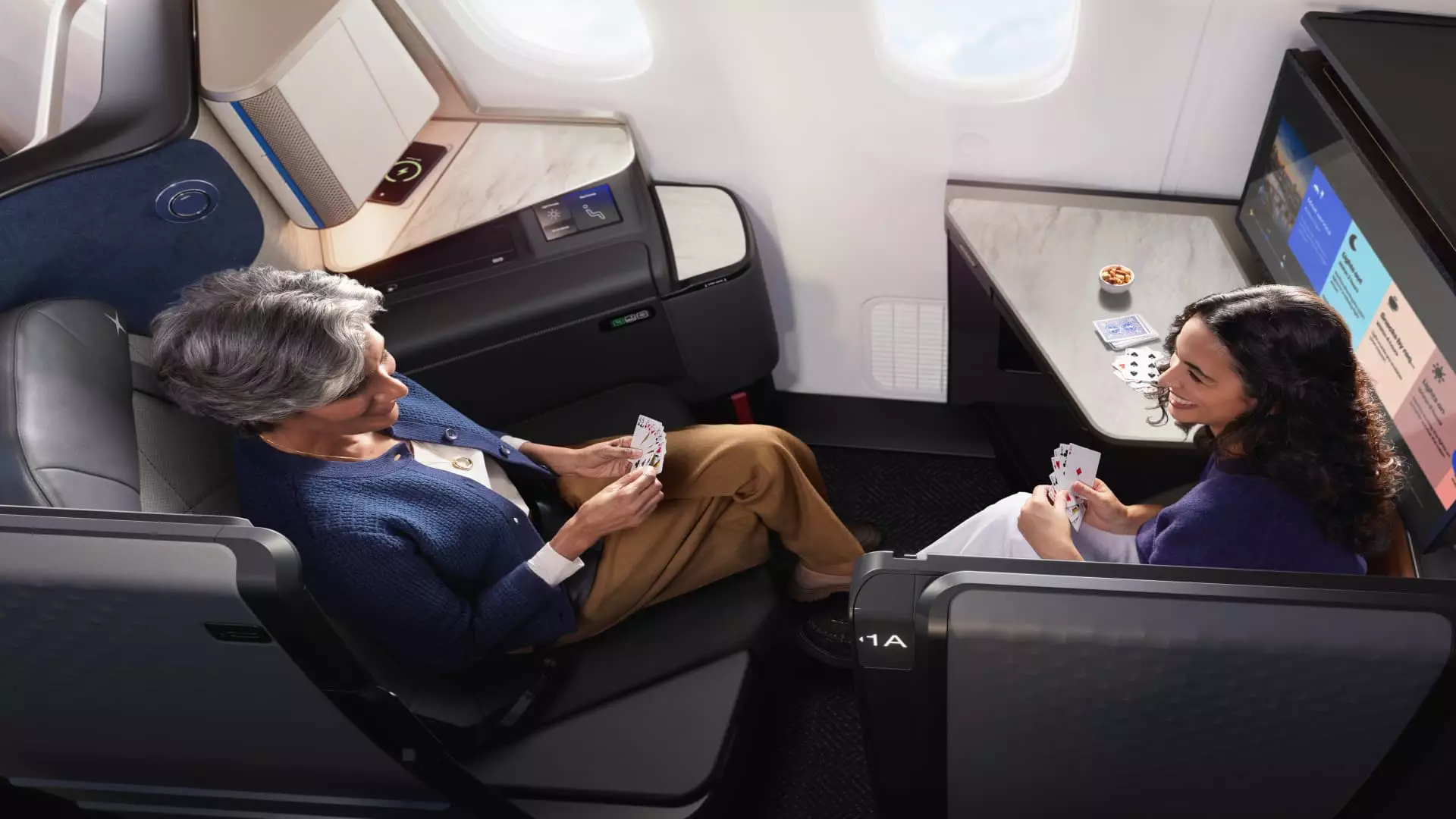In the ruthless realm of international travel, U.S. airlines have plunged into an extravagant war to capture the hearts—and wallets—of business-class travelers. They’re not simply refining their offerings; they are engaging in an arms race driven by luxury that raises questions about the very essence of air travel. With the industry attempting to outdo itself through the latest innovations—from sliding doors on suites to lavish amenities—one must ask: Are we witnessing the birth of a more gratifying flying experience, or merely the continuing excess of an industry at odds with its public image?
American Airlines has entered the fray with a bold move set to transform its business-class flights. The upcoming launch of its 787-9P “suites” promises an array of modern luxuries, including enhanced “living area” and tech-savvy features such as a trinket tray, and wireless charging pads. Yet, amid this intriguing glamour, lies an uncomfortable truth: passengers paying astronomical fares are often left feeling undervalued as they get packed like sardines in cramped spaces. The question shifts from “What can airlines do to elevate experiences?” to “At what point does luxury become a distraction from the fundamental flaws of air travel?”
Innovation Mimicking Competition
In tandem with American Airlines, United Airlines has made a powerful assertion with its newly imagined Polaris offering, featuring business-class seats equipped with doors— another signal that privacy is paramount in the hunt for premium passengers. Here, United has gone further with its “Polaris Studio,” boasting oversized suites and elaborate technology like 27-inch 4K screens, while priced at an undisclosed premium. The ostentatious amenities can be likened to the proverbial ruffle of feathers that appeals to transient executives who often value perceived exclusivity over genuine comfort. Such an approach caters to a psychology that thrives on social status rather than authentic enjoyment of flight.
Delta Air Lines, currently the heavyweight champion in U.S. carriers regarding profitability, has also birthed its version of luxury, complete with sliding-door suites. In an industry where margins are razor-thin, it’s evident that airlines are preaching to an audience that is more than willing to spend lavishly to escape the bleak reality of typical economy travel. If we analyze this trend critically, it’s clear that airlines have elegantly stirred a pot of high-stakes marketing while relegating the humble economy traveler to endure increasingly awful conditions in a cramped cabin.
The Price of Affluence
Let’s address the elephant in the room—pricing. Tickets for American Airlines’ new suite from Philadelphia to London are scaling dizzying heights of $5,747, compared to the paltry $867 price of standard coach. This stark difference signifies not just a transaction, but a delineation between social classes. While it is commendable for airlines to invest in premium travel options, one has to pause and contemplate who these enhancements primarily serve. The disparity in pricing reveals a blatant divide in accessibility, and one might argue that this burgeoning trend prioritizes a wealthier clientele over providing a transformative travel experience for everyone.
In this context, as carriers like American and United focus intensely on affluent travelers, they ignore the increasing number of patrons who are priced out—those who might otherwise wish to enjoy a more plush journey. It leads us to question the sustainability of this demographic targeting: Will there be continued demand from the elite when the very core of the airline experience remains uninspiring for the majority?
The Role of Comfort and Experience
Robert Mann, an aviation consultant, underscores a crucial aspect of this evolving landscape, noting the degradation in economy class has driven many to pursue business-class seats. This commentary suggests a key dynamic at play: the desire to escape uncomfortable realities takes precedence over the inherent buzz of flying in a class supposedly designed for better comfort. Airlines have recognized that as they elevate the experience for the privileged few, the anguish faced by many in economy may only bolster their premium ticket sales.
And what about soft product offerings? This obsession with plush bedding, top-notch headphones, and gourmet dining evokes an era when luxury was not just an option but a necessity. While an amuse-bouche of caviar in Polaris might dazzle, this excessive focus distracts from the simplicity of better service. Travelers recall the golden days of air travel, where customer satisfaction was rooted in genuine service and comfort rather than mere trinkets and excessive grandeur.
As the airlines continue to navigate this labyrinth of ambition and excess, one must wonder whether they are truly advancing the passengers’ experience or merely perpetuating an illusion of grandeur that masks the underlying inadequacies of air travel. The future of aviation hangs in the balance between hyper-luxury and thoughtful innovation, but for now, it appears they have chosen excessive luxury over genuine connection.

